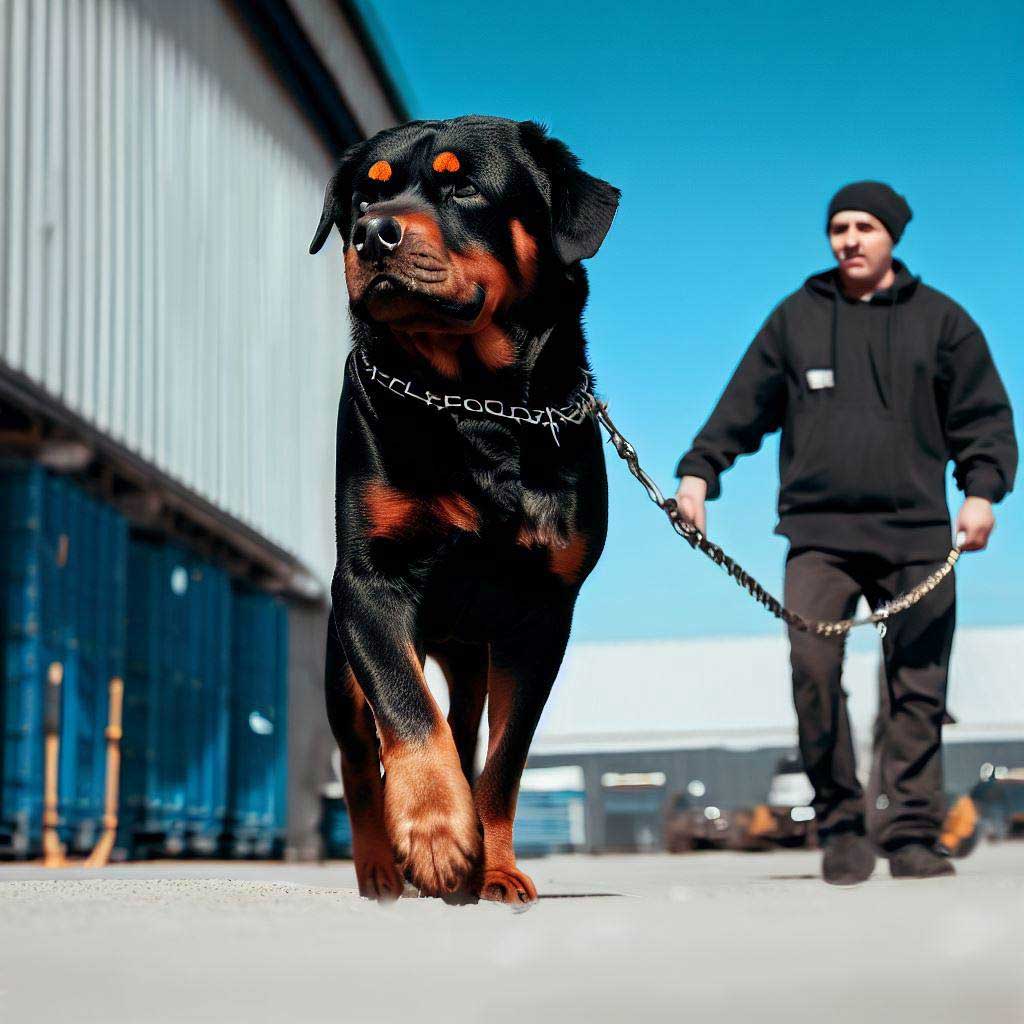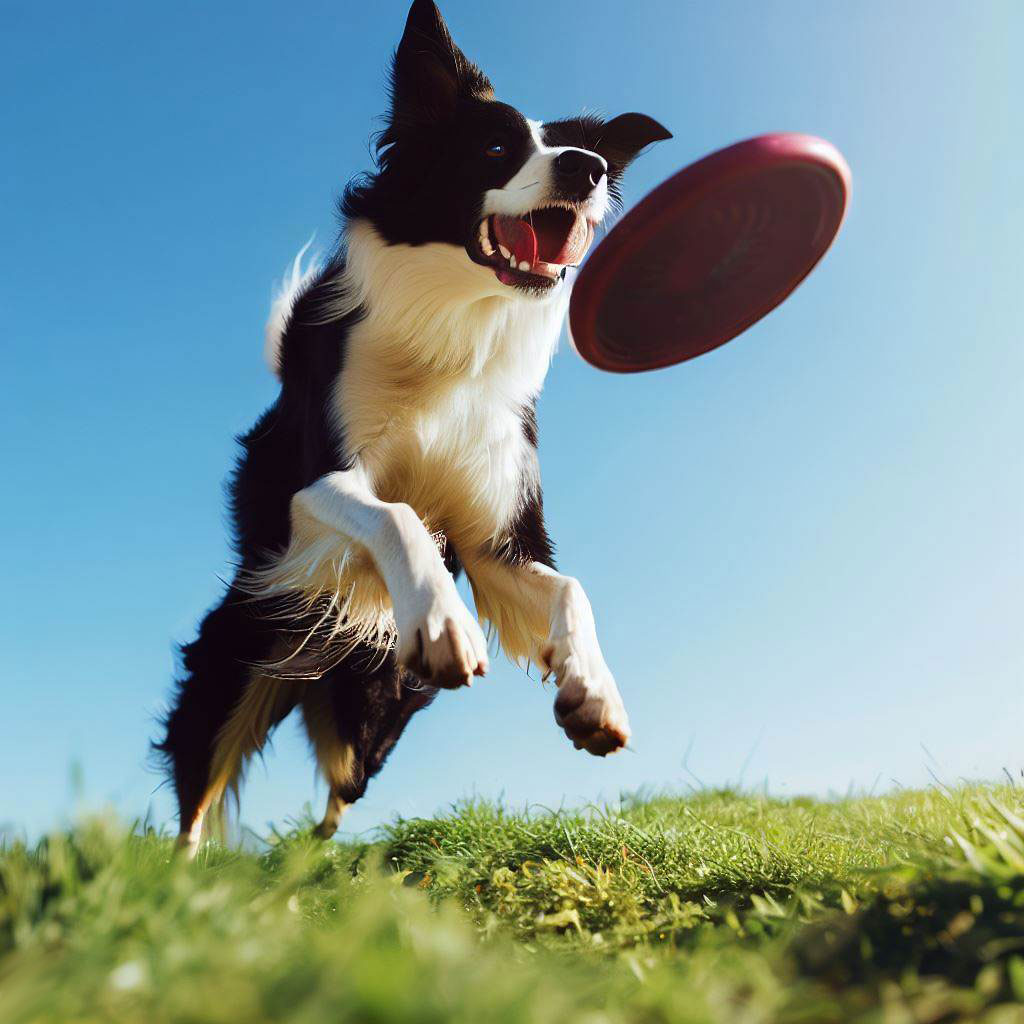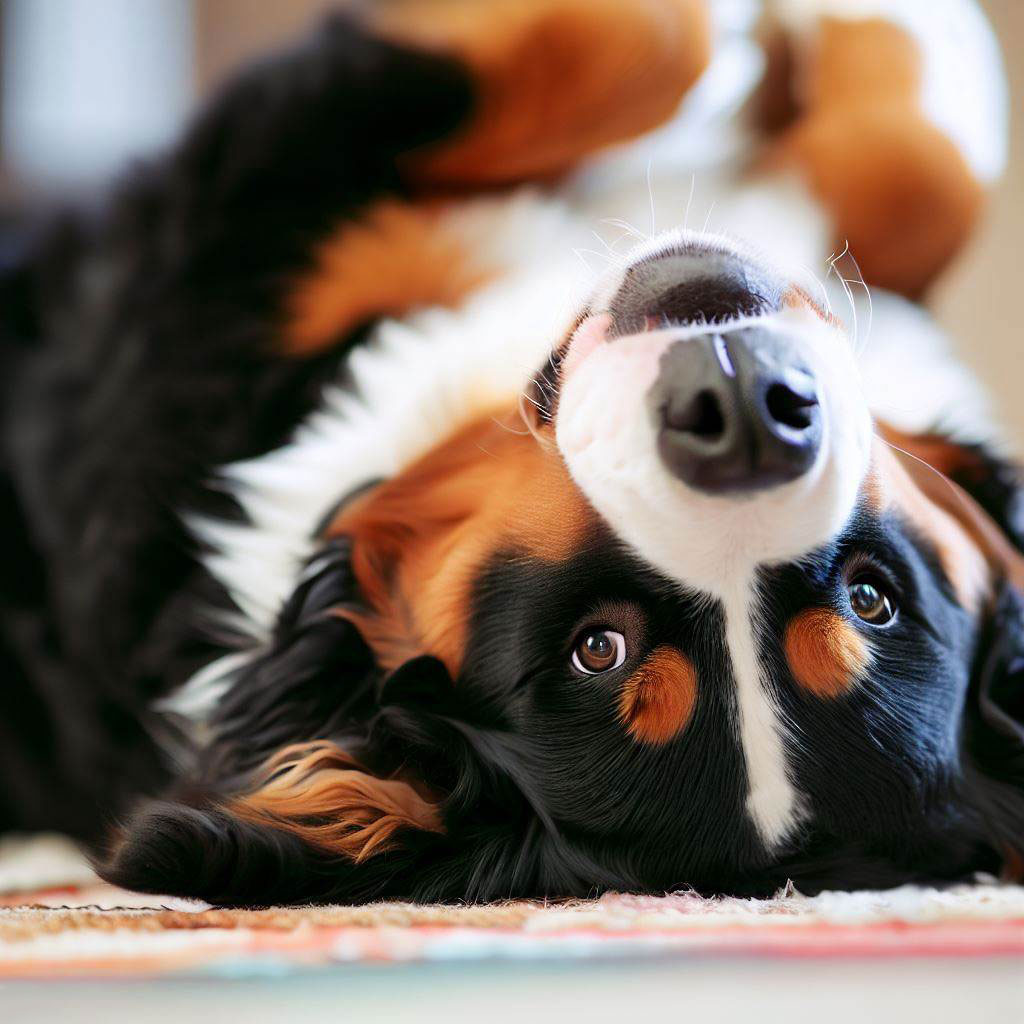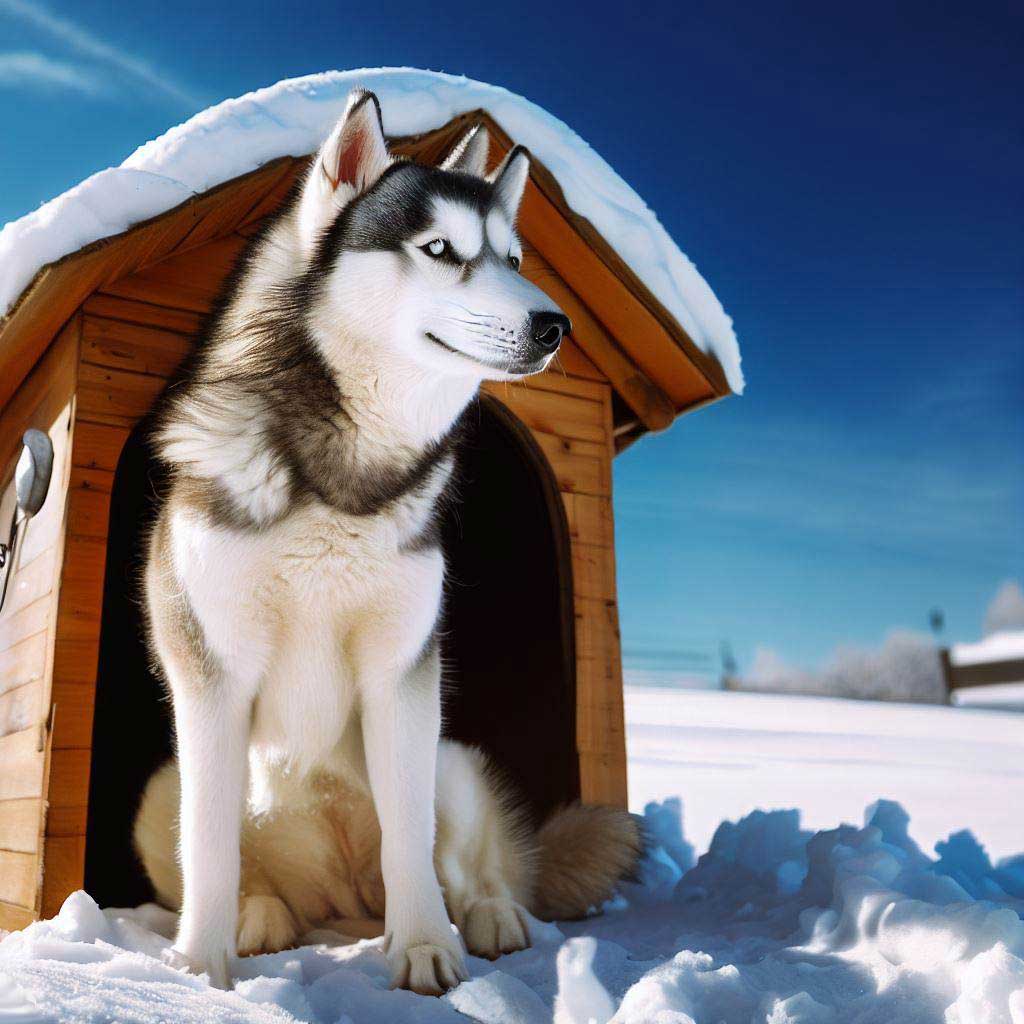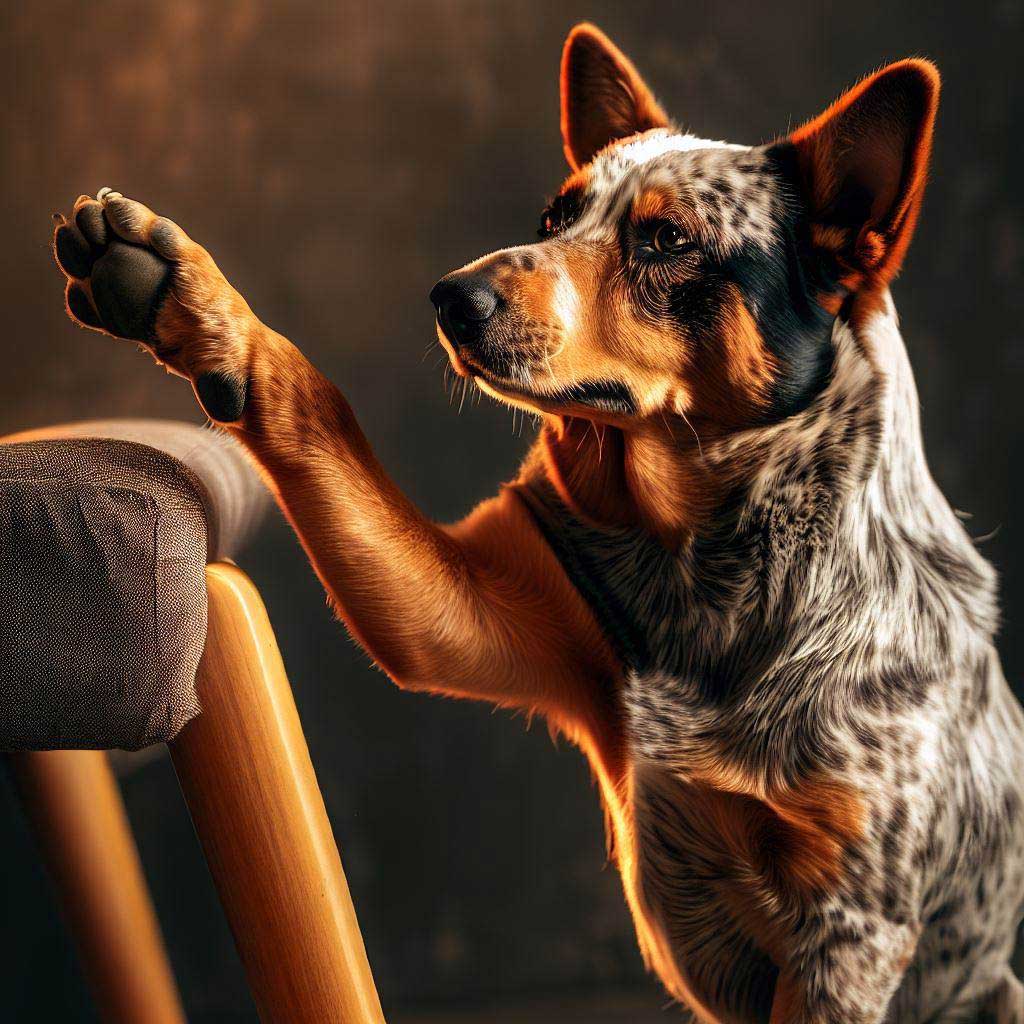Protection Dog Training: Top 10 Guard Dogs explored. Discover which breeds excel in safety and loyalty for homes and professionals.
Table of Contents
Protection Dog Training: Understanding the Basics and Beyond
Brief History of Protection Dogs:
From the earliest civilizations, the bond between humans and dogs was forged not just out of companionship, but necessity. Ancient Egyptian carvings depict canines alongside soldiers and hunters, providing insight into their protective roles even then. Over the centuries, the innate guarding instincts of specific breeds were recognized and refined. From guarding livestock against predators in pastoral communities to standing sentinel in medieval castles, the function of protection dogs has a storied lineage that predates modern training methods.
The Importance of Protection Dog Training in Modern Times:
Today’s world, with its complex threats and unpredictable scenarios, has illuminated the importance of protection dog training like never before. The surge in personal security needs, coupled with the rise in crime in certain regions, underscores this training’s significance. It isn’t just about safeguarding valuables; it’s about ensuring the safety of families, especially in situations where a dog’s response time and instincts can surpass human capabilities. Moreover, in professional settings like the military, law enforcement, and private security, trained protection dogs are indispensable. Their heightened senses, especially their acute sense of smell and hearing, make them invaluable assets in detecting threats that might elude the human eye and ear.
Scope and Role of a Protection Dog:
Protection dogs are multifaceted. Their roles can be as diverse as the settings they operate in. In a domestic context, they serve as guardians, shielding homes from intruders and providing a sense of security to families. Their mere presence often acts as a deterrent, signaling to potential criminals the heightened risk of confrontation.
In more specialized settings, their scope expands. Military and police forces deploy these dogs in critical operations, relying on them for tasks ranging from detecting explosives and narcotics to subduing suspects. Their training equips them to work seamlessly alongside human officers, understanding commands and responding in high-pressure situations with precision.
Furthermore, protection dogs also play a role in search and rescue operations. Their keen sense of smell, combined with their ability to navigate difficult terrains, makes them invaluable in locating lost individuals or even detecting survivors in disaster-hit areas.
The role of a protection dog transcends its training. It’s about trust, reliability, and an unwavering commitment to their duty, be it in a home setting or on the frontline of defense.
What is Protection Dog Training?
Pet owners often pride themselves on their dogs’ natural instinct to bark at the unfamiliar or display territorial behavior. However, this rudimentary protective response doesn’t equate to the specialized discipline inherent in a protection dog. Protection dog training refines these base instincts, shaping them into a responsive, calculated, and efficient approach to potential threats.
Let’s delve into the nuances.
The Difference between a Pet and a Protection Dog:
A family pet may bark at the postman, chase the neighbor’s cat, or growl if its food is approached. These are instinctive behaviors. In contrast, a protection dog is conditioned to react in specific ways to specific threats. The stakes are higher, and the training is more intensive, focusing on control, obedience, and discernment.
The Primary Objectives of Protection Dog Training:
Beyond teaching a dog to sit or fetch, protection dog training seeks to:
- Amplify and refine the dog’s natural guarding instincts.
- Promote controlled aggression, ensuring that the dog only acts when necessary.
- Instill impeccable obedience, ensuring the dog responds to every command, every time.
- Teach the dog to differentiate between benign and harmful situations.
Overview of Basic to Advanced Training Techniques:
Basic Training
Basic Training starts with fundamentals: obedience commands such as “sit”, “stay”, “down” and “come.” You can read what the 7 commands to train a dog in this article. Once mastered, the dog progresses to more specialized commands tailored to protection, like “watch,” “guard,” or “hold.”
Intermediate Training
Intermediate Training takes it a notch higher. Here, dogs learn controlled aggression techniques. They’re trained to bark on command, hold a suspect without biting, or guard a particular area. Crucially, they’re also conditioned to release on command, ensuring that when a threat is neutralized, they revert to a controlled state.
Advanced Training
Advanced Training is tailored for dogs destined for specialized roles in the military or police. These techniques encompass skills like scent detection, search and rescue, and even tactical cooperation in high-risk scenarios.
But protection dog training isn’t merely about actions. An essential layer of the process is the dog’s psychological conditioning. They’re taught to analyze scenarios, judging if a person’s intent is benign or malicious. It’s this fine-tuned discernment that sets protection dogs apart from the ordinary pet. They are conditioned to assess, react, and if needed, neutralize a threat, all while being completely under the handler’s control.
The road from basic obedience to advanced protection skills is a blend of persistence, patience, and expertise. As an accredited protection dog trainer, I can attest to the dedication and discipline required from both the trainer and the dog. The outcome, however, is a meticulously trained animal, a loyal companion whose primary objective is the safety of its handler and territory.
With the ever-evolving nature of threats in today’s world, the art and science of protection dog training have never been more critical. It’s an investment in safety, peace of mind, and trust in a dog’s unfaltering loyalty and discipline.
The Best Breeds for Protection Dog Training
When training dogs for varied roles from police operations to household security, a question that frequently arises is: Which breeds are best suited for protection dog training?
The answer, though seemingly straightforward, involves a deep dive into the inherent traits of various breeds and the nuances that make them stand out.
The Innate Traits Favoring Certain Breeds for Protection:
Before we delve into specific breeds, it’s essential to understand what attributes make a dog an excellent candidate for protection. Naturally, not every dog breed exhibits the same propensity for guarding or protection, and this differentiation is rooted in their inherent traits. Here are some factors to consider:
Natural Guarding Instincts:
This primal trait is hardwired into some breeds more than others. Over generations, selective breeding has amplified this instinct in specific breeds, making them naturals for protection dog training.
Physical Strength and Stamina:
While size isn’t the only determinant, a dog’s physical capabilities play a pivotal role in protection. A robust and fit dog can ward off threats more effectively than its smaller counterparts.
Intelligence and Trainability:
Mental acumen is as crucial as physical prowess. A dog that can learn, adapt, and respond to varied scenarios is a trainer’s dream.
Loyalty and Attachment to Their Owners:
A protective dog’s bond with its owner is paramount. This loyalty translates to a heightened sense of duty in guarding its human.
Alertness and Keen Senses:
An acute sense of hearing and smell can detect threats that might elude the human senses. Furthermore, a vigilant dog is always on the lookout, making it more responsive to potential dangers.
Top 10 Breeds for Protection Training and Their Unique Strengths
German Shepherds
As one of the most recognized breeds in the world, German Shepherds are synonymous with loyalty and intelligence. Hailing from Germany, their history as herding dogs has equipped them with a high level of alertness and agility. Their commitment to their handler makes them ideal for various roles, from search and rescue to service dogs.
Their balanced temperament allows them to transition seamlessly from an active duty role to a relaxed family setting. Furthermore, their thick double coat, erect ears, and sharp eyes not only add to their aesthetic appeal but also enhance their guarding capabilities. Consistent protection dog training channels their energy and intelligence, ensuring they serve as both loving companions and adept protectors.
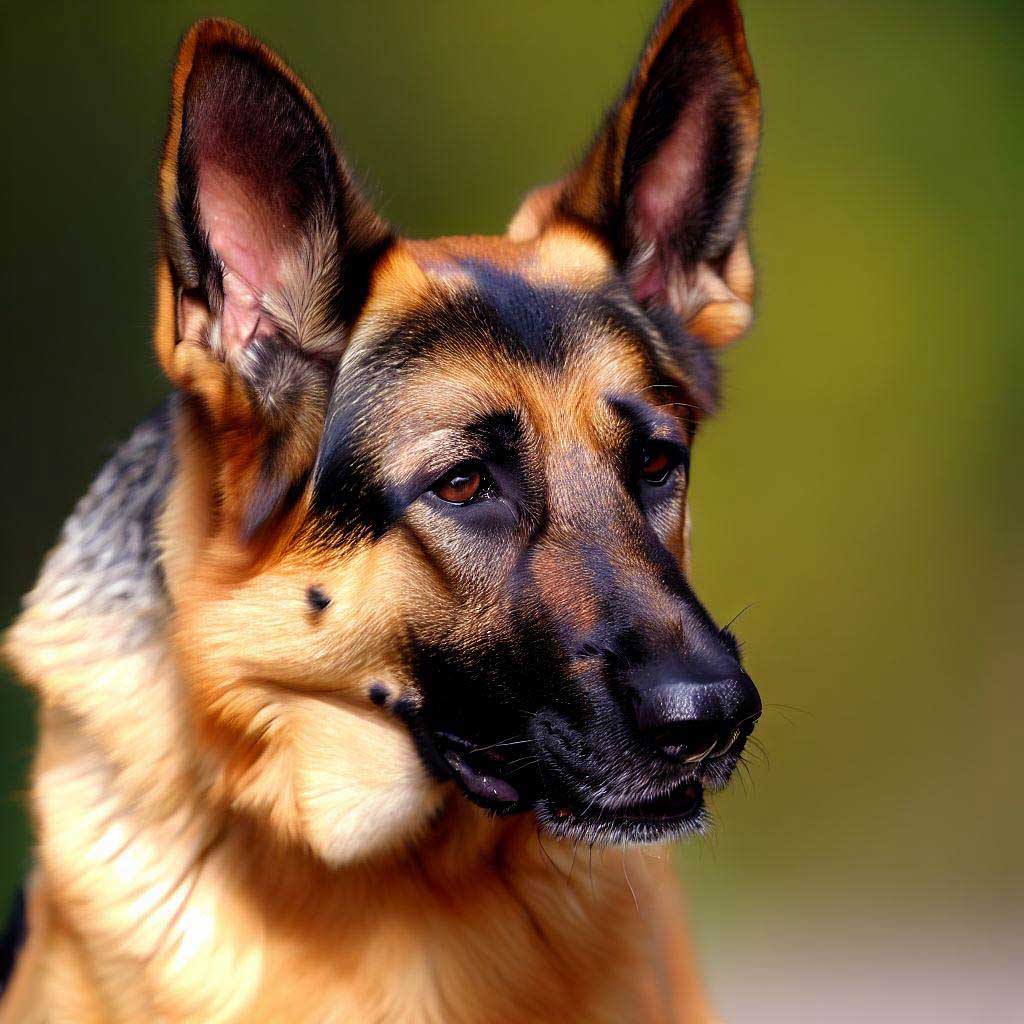
Belgian Malinois
Originating from Belgium, Belgian Malinois are often mistaken for German Shepherds due to their similar appearance. However, their boundless energy and slightly lighter build distinguish them. Favored by the police and military for their endurance and high trainability, they excel in obedience, tracking, and protection tasks. Their short coat requires minimal maintenance, making them practical for active roles. While they can be reserved with strangers, they form strong bonds with their families and can be excellent with children when properly socialized.
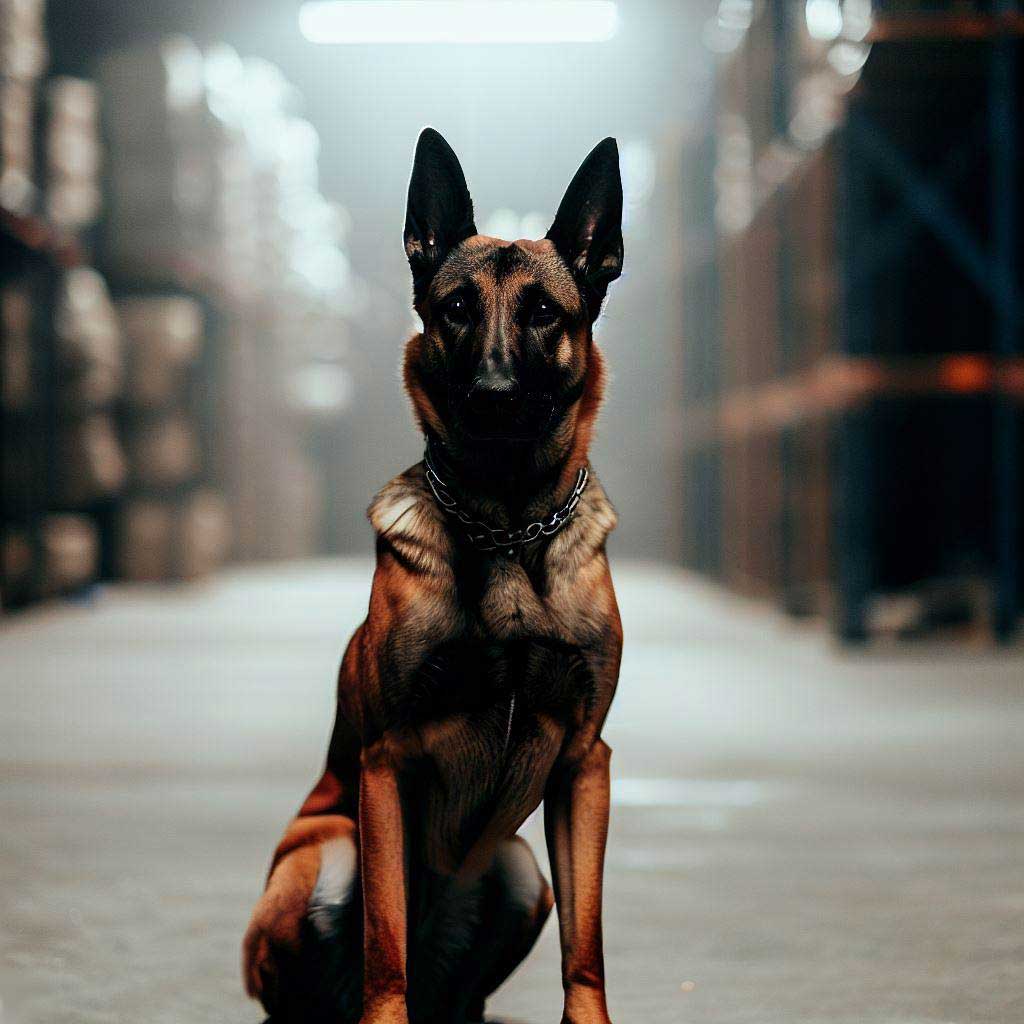
Rottweilers
The Rottweiler’s history as a cattle drover and cart puller has equipped them with strength and tenacity. Originating from Germany, their powerful build and deep bark can deter any potential threats. Despite their imposing appearance, with proper training and socialization, they exhibit a playful and affectionate side, especially around family members. Their loyalty, coupled with their keen senses, positions them as one of the most reliable protection breeds available.
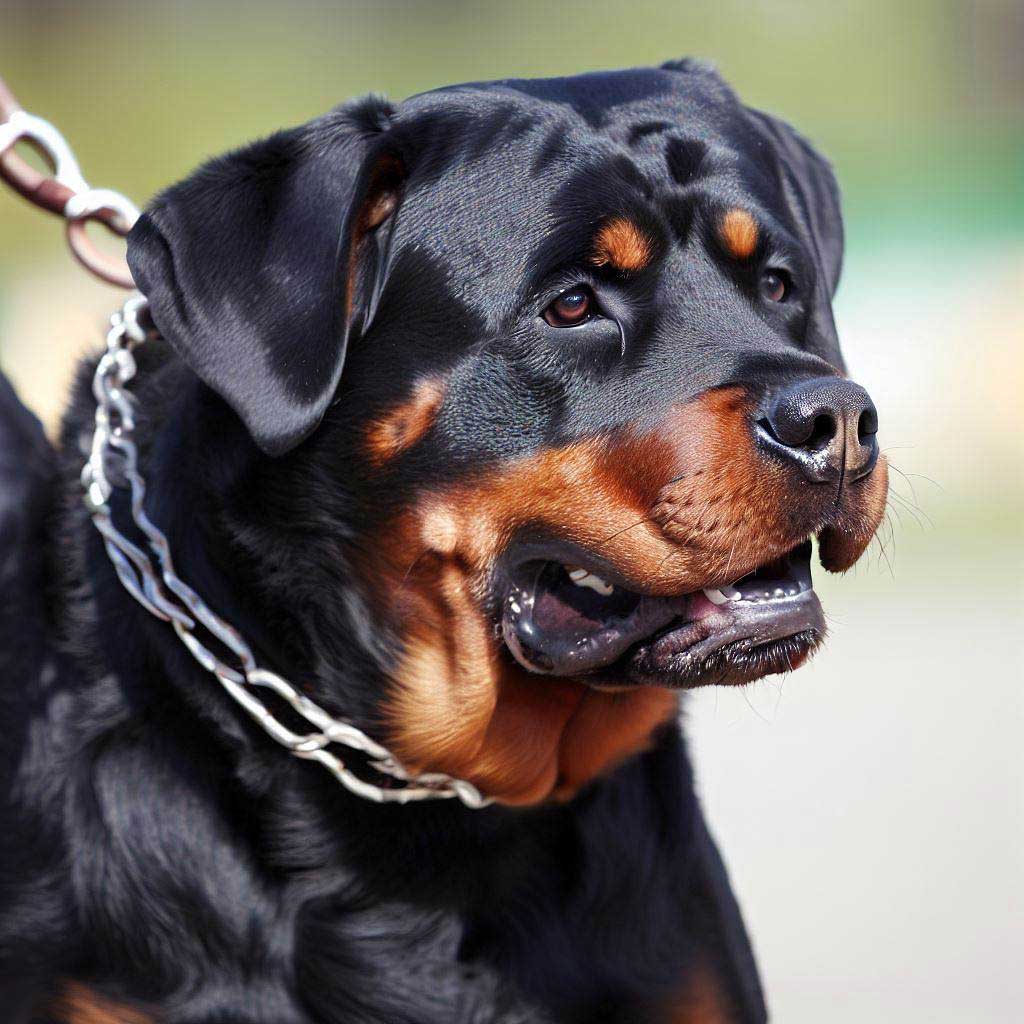
Doberman Pinschers
Sleek, powerful, and graceful, Doberman Pinschers are revered for their guarding instincts. Originating from Germany, their history as tax collectors’ companions required them to be alert and protective. Their natural inclination to guard combined with their intelligence makes protection dog training a seamless process. Their short coat and regal appearance add to their allure, making them both efficient guards and elegant companions.
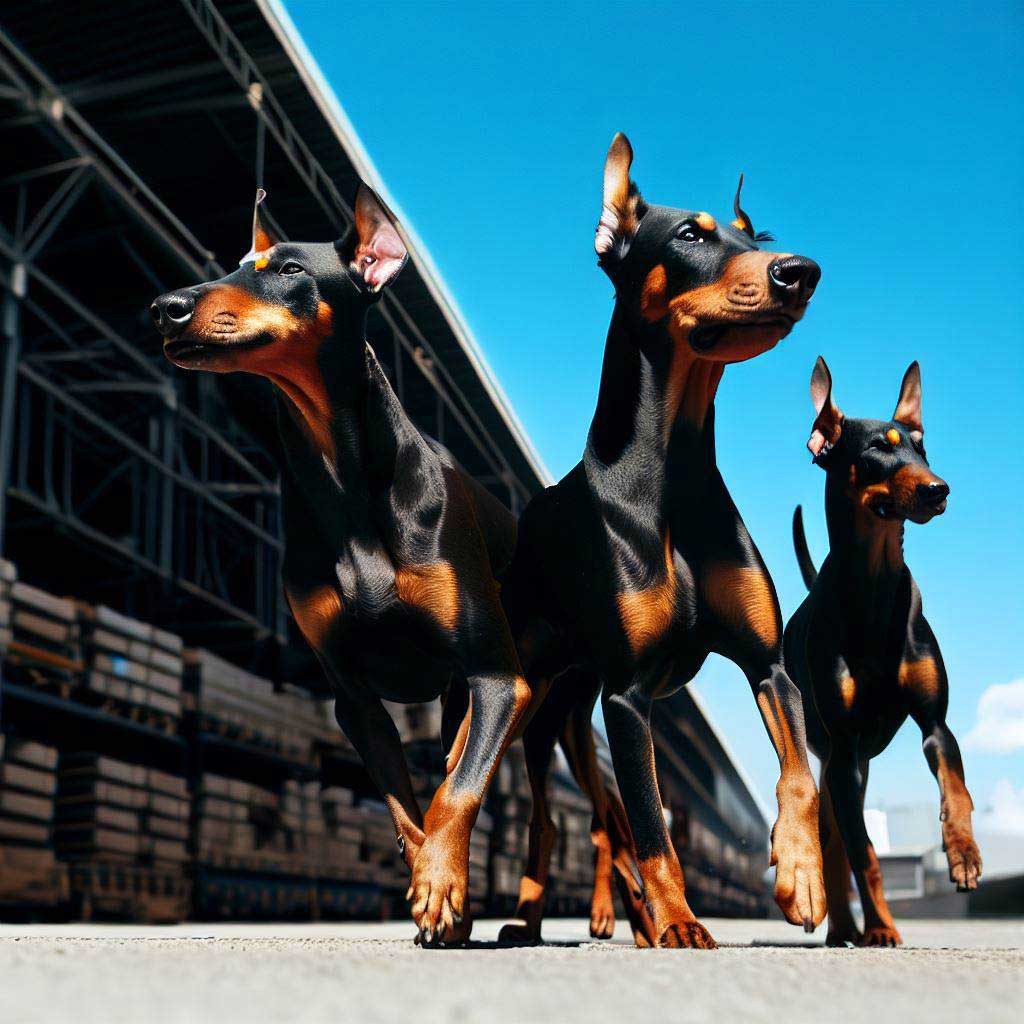
Bullmastiffs
This breed is a true amalgamation of strength and alertness. Originating from England, their lineage comprises Bulldogs and Mastiffs. Designed to guard estates, their intuitive nature allows them to differentiate between genuine threats and benign visitors. They possess a calm disposition, which contrasts their formidable appearance, making them suitable for families, especially with children.

Boxers
German in origin, Boxers were initially bred for hunting and holding large game. Their playful demeanor masks an underlying protective streak. Their strong jaws, muscular build, and agility ensure that they can hold their own when the situation calls for it. With adequate protection dog training, they can transition between playful bouts with family members and standing guard against intruders.
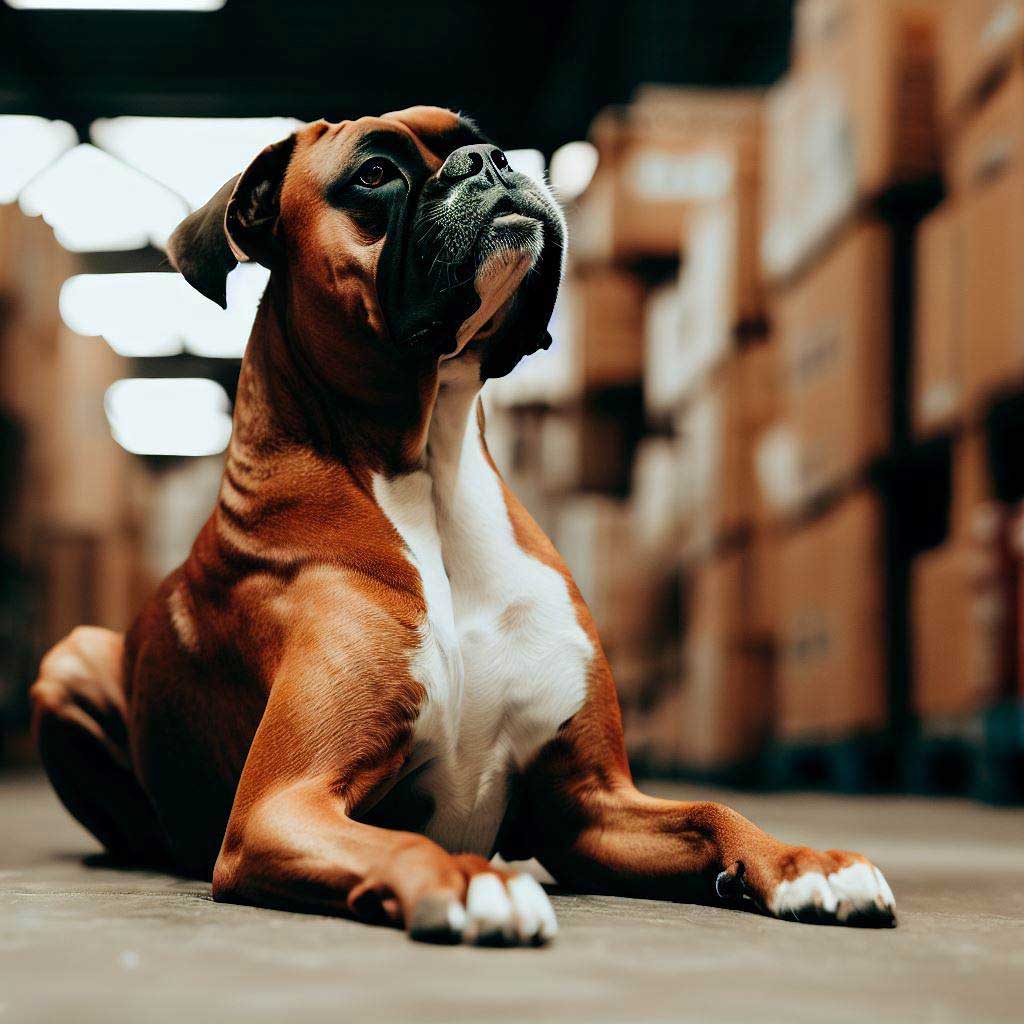
Cane Corso
Hailing from Italy, Cane Corsos boast a rich history as war dogs and farm guardians. Their robust build is complemented by their intelligence and loyalty. Their short coat showcases their defined muscles, portraying an image of strength. Their calm demeanor ensures that they evaluate situations rationally, only springing into action when absolutely necessary.

Akita
Japan’s gift to the world, Akitas are as loyal as they come. Their thick double coat not only equips them for colder climates but also gives them a majestic appearance. Their history as royal guards is evident in their protective nature. They form profound bonds with their families and often exhibit a reserved nature with strangers, ensuring they’re always on alert.

Giant Schnauzer
Originating from Germany, these dogs were bred for herding and guarding properties. Their dense coat and pronounced beard give them a distinct appearance. Beyond their guarding skills, their intelligence makes them easy to train, and their affectionate nature ensures they form close bonds with their families.

Kuvasz
Hungarian in origin, the Kuvasz’s white, fluffy coat is both a visual treat and a practical trait for camouflaging against predators while guarding livestock. Their keen instincts, combined with their protective nature, ensure they’re always ready to defend their loved ones. Their independence and intelligence require consistent training methods, but the results are well worth the effort, yielding a loyal and vigilant companion.
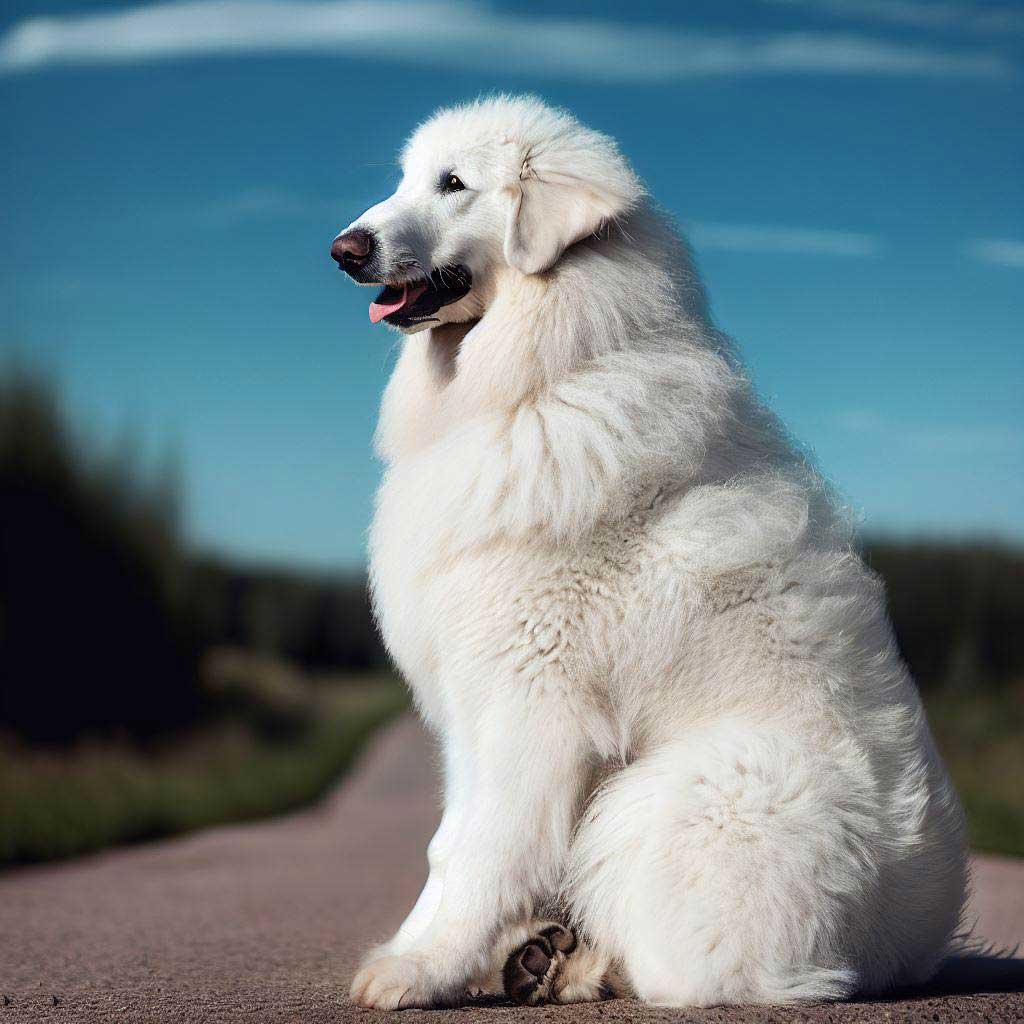
The Cost of Protection Dog Training
Diving into the realm of protection dog training, a myriad of questions can cloud your thoughts. Not least among them: What’s the price tag? From my years as an expert dog specialist, I’ve garnered insights that might surprise you. Investing in your dog’s training isn’t just about money but also time, effort, and the emotional bond that grows between you and your canine companion. Let’s shed light on this perplexing topic.
The Varying Factors Affecting the Cost
There isn’t a “one-size-fits-all” price for protection dog training. The cost can swing like a pendulum, influenced by a multitude of factors:
- Location: Just as real estate prices vary by area, so does the cost of training. Metropolitan areas with a higher cost of living typically charge more than suburban or rural regions.
- Duration of Training: Training a dog isn’t an overnight task. Depending on the depth and breadth of training you want, costs can multiply. Basic obedience? That’s on the lower end. Advanced protection tactics? Prepare to invest more.
- Trainer’s Expertise: Think about it; would you pay the same for a class taught by a local enthusiast versus an industry-renowned expert? Of course not. Experts have insights, techniques, and experience that novices can’t match.
- Dog’s Age and Temperament: Surprisingly, a dog’s age can sway the cost. Younger dogs are typically more adaptable and quicker learners, but older dogs, often set in their ways, might require more time and patience. Furthermore, temperamental dogs might need more extended sessions or specialized training approaches.
Expected Range for Professional Training
Professional protection dog training offers unmatched expertise, but it does come with a price. On average, you might find:
Basic obedience training ranges from $200 to $500 for a series of classes. These instill foundational behaviors every dog should know.
Advanced protection skills, which teach your dog to guard, patrol, and even disarm potential threats, can run from $1,000 to $2,500 or more. The upper limit can skyrocket if you’re looking for elite military or police dog training levels.
DIY Training vs. Professional: Pros, Cons, and Costs
DIY, or “Do It Yourself”, has become the buzzword of our generation. But can you apply the same to protection dog training? Let’s weigh the scales:
DIY Training:
- Pros: The most obvious advantage is cost-saving. Additionally, DIY training can be a bonding experience, fostering a deeper connection between you and your dog.
- Cons: Without professional guidance, there’s room for errors. Missteps in training can lead to unwanted behaviors, and in the worst cases, an aggressive dog.
- Cost: Beyond purchasing books, online courses, or training DVDs, which can range from $20 to $150, the primary cost is time and patience.
Professional Training:
- Pros: Experts guide your dog through tried-and-true techniques. Their vast experience allows them to adjust approaches to each dog’s unique temperament and needs. The end results are generally more reliable and accomplished in a shorter time frame.
- Cons: Besides the higher financial outlay, you might not be present for all training sessions, which could affect the dog-owner bonding experience.
- Cost: As mentioned earlier, expect to invest anywhere from a few hundred to several thousand dollars, depending on the depth of training.
Deciphering the costs surrounding protection dog training can be as intricate as understanding the art of training itself. But with the right insights and expectations, you can make an informed decision that’s best for both you and your four-legged friend.
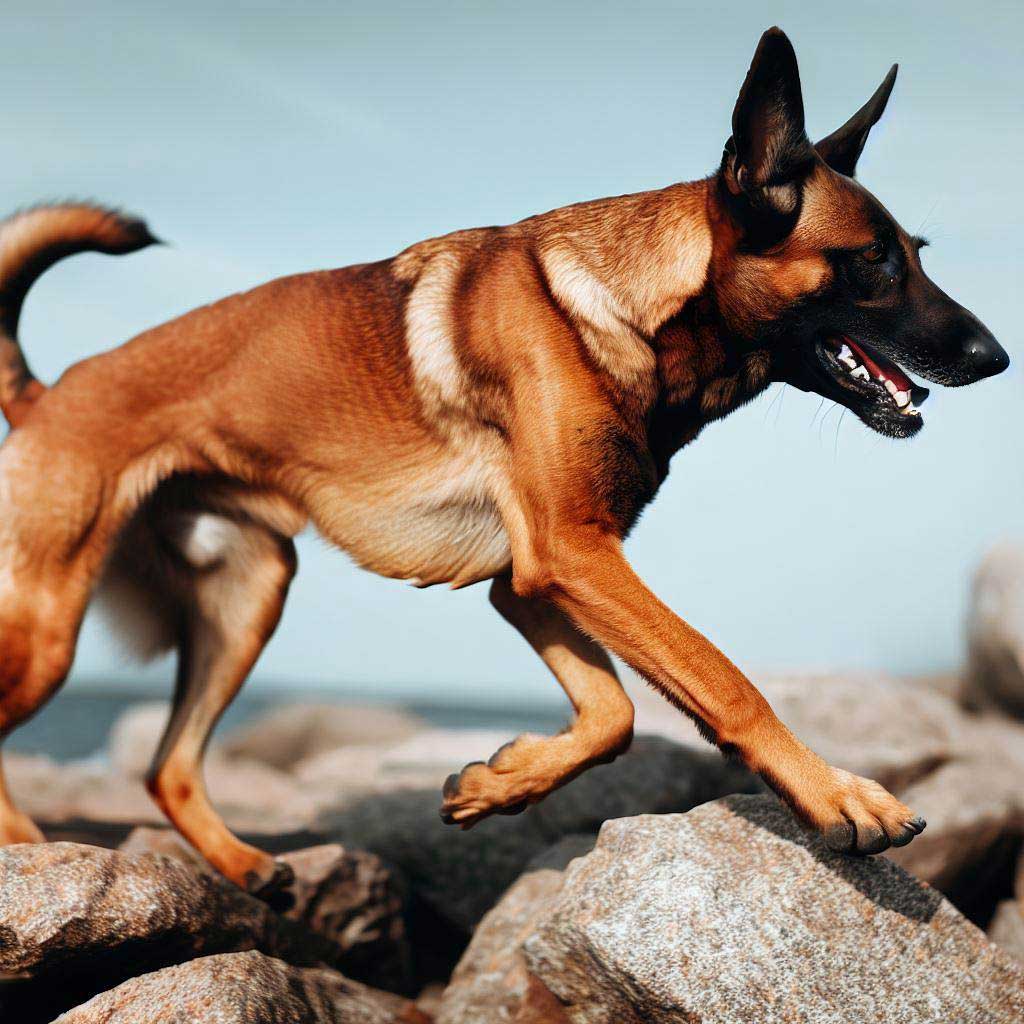
Benefits of Having a Trained Protection Dog
Protection dogs aren’t just about muscles and growls. It’s an art, a synergy of strength, strategy, and soul. If you’re on the fence about investing in protection dog training, allow me to immerse you in the multitudinous benefits.
Safety and Security:
Deterrence against intruders and attackers:
When it comes to safeguarding one’s home and family, there are few deterrents as effective as a trained protection dog. The mere presence of such a dog can dissuade most would-be intruders. It’s not merely their physical prowess, but the aura they exude, honed from rigorous training. Whether it’s the deep, menacing bark that echoes in the dead of night or the assertive stance they take when they sense a threat, it speaks volumes. To put it simply, they radiate an aura that screams, “Think twice.”
Tracking and alerting capabilities:
Protection dog training doesn’t just teach a dog to defend; it sharpens their natural senses. Dogs have an innate ability to track, and when this ability is refined through training, they become your home’s state-of-the-art security system. They can detect unusual sounds, movements, or even scents. Even more impressively, they can discern between everyday occurrences and potential threats. So, before you even realize something’s amiss, your canine companion is already on high alert, ready to notify you.
Bonding and Loyalty:
Enhanced relationship between dog and owner:
It’s a common misconception that protection dog training makes a pet more aggressive or less affectionate. In truth, the bond forged during training sessions is unparalleled. As you navigate the challenges and celebrate the milestones, a deep connection blossoms. This journey transforms your relationship, converting simple pet-and-owner dynamics into a cohesive team. By understanding and respecting each other’s strengths and weaknesses, you’re not just training together; you’re growing together.
The trust and mutual respect forged during training:
Trust is the bedrock of any relationship, and it’s no different with your canine companion. Every time you engage in protection dog training, you’re sending a clear message: “I trust you to protect, and I’ll guide you on how.” This mutual respect and reliance form an unbreakable bond. In return, your dog acknowledges this trust, reflecting it with unwavering loyalty. It’s not merely about obeying commands; it’s about understanding the intent and emotions behind them.
Mental and Physical Stimulation for the Dog:
Keeps the dog active, alert, and healthy:
In a world of dog biscuits and belly rubs, protection dog training serves as an exhilarating break from the norm. It provides the necessary physical exercise that every dog craves. Running, jumping, tracking – it’s the whole gamut. This not only ensures they remain fit but also significantly reduces risks of obesity, heart diseases, and joint problems. But it’s not just about the body; it’s equally about the mind. The training challenges them mentally, ensuring they remain sharp and alert.
Offers a purpose and task-oriented behavior:
A dog without a purpose can become restless and even destructive. Protection dog training offers them a role, a duty. It shifts their perspective from being mere pets to guardians. This sense of purpose is pivotal for their mental well-being. It reduces anxiety, curbs destructive behavior, and instills a sense of accomplishment. When they stand guard, track, or alert you, it’s not just a trained response; it’s a task they proudly undertake, a duty they perform with utmost diligence.
Protection dog training, while initially perceived as a security measure, transcends into realms of bonding, trust, health, and purpose. It’s not just a skill set for your dog; it’s a lifestyle, one that enriches both your lives in myriad ways.
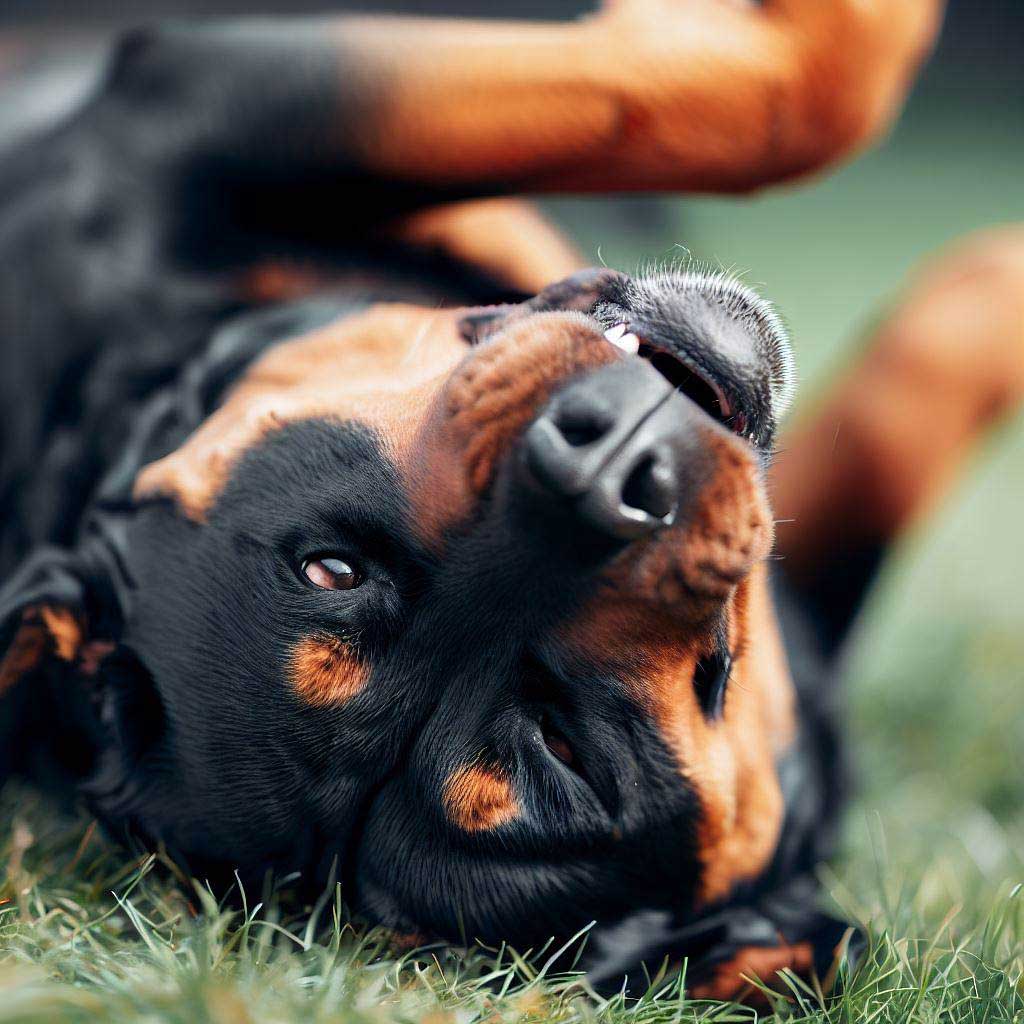
Challenges and Potential Downsides
Protection dog training is an intricate dance of discipline, instinct, and bond. While its benefits are numerous, like all great endeavors, it isn’t without challenges. Let’s delve deeper into the world of protection dog training to uncover some potential stumbling blocks you might encounter.
Time Commitment:
Duration of training from puppy to fully trained protector:
Imagine molding a young, energetic puppy into a disciplined protector. It’s no weekend gig. Typically, it takes about 1 to 2 years of consistent training to transform a green pup into a competent protection dog. But this timeline isn’t set in stone. Depending on the breed, individual temperament, and the specifics of the training regimen, it can be shorter or longer. However, for those thinking of dabbling in protection dog training, it’s essential to understand that it’s a marathon, not a sprint.
Ongoing training and reinforcement:
Training a protection dog isn’t a “one and done” deal. Just like any professional athlete or soldier, the training never truly ends. Think of it as sending your dog to the gym. Regular training sessions, even after your dog has reached “fully trained” status, are crucial. Not only do these sessions keep your dog’s skills sharp, but they also reinforce previously learned behaviors and commands. Moreover, the world isn’t static. New situations and environments can emerge that your dog needs to be trained for. The continuous commitment to their training ensures they’re always at the top of their game.
Potential Aggressiveness:
Risks associated with improperly trained protection dogs:
Protection dog training is a delicate balance. On one hand, you’re honing their natural instincts to protect and defend. On the other, you’re trying to ensure they remain sociable and controlled. But, sometimes things can skew. Improper training methods, inconsistency, or simply not understanding the dog’s individual needs can lead to an overly aggressive canine. This isn’t just a risk to strangers, but also to friends, family, and even the owner. Dogs trained with punitive measures or by trainers who don’t understand the fine nuances of protection dog training can become unpredictable. It’s paramount to emphasize the importance of accredited training programs and professionals.
Need for consistent socialization and behavior check:
It’s a myth that protection dogs should be isolated to maintain their “edge.” Consistent socialization is paramount. This doesn’t just mean letting them play with other dogs (though that’s beneficial), but also exposing them to various environments, people, and situations. Regular behavioral checks are vital. Think of it as a periodic audit, ensuring that your dog’s protective instincts aren’t spilling over into unwarranted aggression. Also, it’s an opportunity to nip potential behavioral issues in the bud. An unsocialized protection dog, or one that isn’t periodically checked, can become a ticking time bomb of unpredictability.
Protection dog training isn’t just about teaching commands. It’s about understanding a living being’s psyche, needs, and instincts. Like all great endeavors, challenges exist. But with knowledge, patience, and commitment, these challenges are just stepping stones to a more secure and enriched life with your four-legged protector.
Top Tips and Tricks for Effective Protection Dog Training
Training a dog for protection requires a special set of skills and understanding. It’s not just about teaching them commands, but also nurturing their instincts and forging a bond. If you’re embarking on this journey, here are some top tips to ensure effective protection dog training.
Start training early but with gentleness.
Protection dog training begins best when your canine companion is still a pup. Why? Because the earlier you instill discipline, the better ingrained it becomes. However, always remember, they’re still young. Their minds and bodies are still developing. Approach with gentleness and understanding. This isn’t about breaking their spirit but guiding it.
Consistency is key: Keep training sessions regular.
Imagine trying to learn a new language, but only practicing once a month. It wouldn’t be effective, right? The same goes for protection dog training. Regular training sessions ensure that lessons are reinforced and not forgotten. However, remember not to overwhelm them. Regular short sessions are more effective than infrequent lengthy ones.
Positive reinforcement over punishment.
Dogs, like humans, respond better to positivity. Using treats, praises, or playtimes as rewards for good behavior not only strengthens their skills but also reinforces your bond. On the flip side, punishment can lead to fear or resentment. Remember, you want a partner, not a fearful servant.
Socialize your dog regularly.
There’s a misconception that protection dogs should be aloof or unsocial. This couldn’t be further from the truth. Regular socialization ensures they can differentiate between normal and threatening scenarios. It also reduces the risk of unnecessary aggression.
Engage in real-world simulations.
Protection dog training isn’t just about commands. It’s about preparing them for real-world scenarios. Regularly simulating potential threats or situations helps your dog understand when to act and how. It’s the difference between a dog that knows commands and a dog that can effectively protect.
Invest in professional training for advanced techniques.
All training efforts have their share of rough patches. When you hit one, remember there’s a haven online. Online dog training courses have become many pet owners’ trusted compass. Navigate with “Best Online Dog Training Courses: Any Dog Will Love” – a guide that unravels 15 stellar courses, spotlighting the top three to steer your journey.
While basic training can be done at home, advanced protection dog training techniques often require a professional’s touch. These trainers not only come with experience but also with tools and knowledge that are invaluable. It’s an investment in your dog’s capabilities and your safety.
Understand your dog’s limits and stress signals.
Dogs aren’t robots. They have limits. Pushing them too hard can lead to stress or even injury. Recognizing when they’re tired, frustrated, or overwhelmed ensures a healthy training environment. Remember, a stressed dog isn’t an effective protector.
Always prioritize safety, for both dog and trainer.
Protection dog training involves simulating threatening situations. Always ensure that these simulations are controlled and safe. Using protective gear, ensuring the training area is hazard-free, and maintaining a calm demeanor are just a few ways to prioritize safety.
Keep up with regular health check-ups for your protection dog.
A protection dog’s health is paramount. Regular vet check-ups ensure that they are in peak physical and mental condition. Remember, a healthy dog is a responsive and effective protector.
Never encourage aggressive behavior outside of command-based scenarios.
It’s essential to draw a line between protection and unnecessary aggression. A well-trained protection dog should only exhibit aggressive behavior on command or in genuine threat situations. Encouraging aggression outside of this can lead to unpredictable behavior.
Embarking on the journey of protection dog training is both challenging and rewarding. It’s a dance of discipline, trust, and mutual respect. While the path might be demanding, with these tips in mind, you’re well-equipped to navigate the intricacies of training effectively.
Conclusion: Protection Dog Training - Top 10 Guard Dogs
Reiterating the significance of training and the bond it creates:
In the world of canines, few endeavors yield such a deep-seated bond as that of protection dog training. But why is that? At its core, it isn’t merely about obedience or teaching commands. Instead, this journey is a dance of trust, mutual respect, and understanding. As you invest time and patience, consistently guiding your dog through various drills, you do more than just shape their behavior. You shape their very character, molding them into dependable guardians while also fostering a profound connection between the two of you.
It’s a bond like no other. For every command obeyed, for every correct response to a threat, there’s an undercurrent of unwavering trust. Your dog doesn’t merely follow out of obedience but out of deep loyalty, recognizing you not only as their trainer but as their cherished partner. The journey through protection dog training, with its highs and lows, creates an unbreakable tether, one where both parties draw strength from each other.
Final thoughts on the role of a protection dog in a household or professional setting:
Reflecting on the place of a protection dog, whether it’s within the cozy confines of a home or the rigorous demands of a professional setting, one thing remains evident: their value is unparalleled. In households, beyond the security they offer, they stand as steadfast companions, always alert, always ready, ensuring that their family’s safety is paramount. Their presence alone, a product of meticulous protection dog training, often serves as a deterrent to potential threats.
In professional realms, be it in police work, military operations, or private security, a well-trained protection dog is an asset that stands head and shoulders above many technological advancements. Their agility, sharp instincts, and unparalleled loyalty make them indispensable, proving that in the vast tapestry of security measures, the bond between man and dog, fortified by proper training, remains one of the most potent.
In essence, protection dog training isn’t just a task or a regimen. It’s a commitment, a promise, and, most importantly, a journey – one that reaps benefits far beyond the realms of mere security.
Frequently Asked Questions: Protection Dog Training - Top 10 Guard Dogs
What age is best to start protection dog training?
Initiating protection dog training is optimal when the dog reaches an age where they can mentally and physically handle the demands, generally around 6 months to a year old. However, foundational obedience training can begin earlier, laying the groundwork for more specialized lessons.
Can any dog be trained for protection?
While any dog can undergo basic obedience training, specific breeds with natural guarding instincts and aptitude are better suited for advanced protection dog training. Yet, the individual temperament of the dog plays a significant role, making it essential to assess each dog on a case-by-case basis.
How long does it typically take to train a protection dog?
On average, protection dog training spans anywhere from 6 months to 2 years, contingent on the dog’s aptitude, the trainer’s expertise, and the specific training objectives. The complexity and breadth of tasks you want your dog to accomplish can elongate the timeframe.
Is protection dog training safe for the dog and my family?
When carried out correctly by skilled professionals, protection dog training is safe for both the dog and the household. Proper training emphasizes control and discipline, ensuring that the dog reacts appropriately in various scenarios. Consistent reinforcement and understanding are crucial.
How often should a protection dog undergo refresher training?
At least once a year, it’s advisable for protection dogs to undergo refresher training. Regularly revisiting skills helps to reinforce their training, ensuring that their response remains sharp and reliable.
Can I train a protection dog myself?
While basic obedience can be taught at home, specialized protection dog training is intricate. It requires a profound understanding of canine behavior. For optimum results and safety, it’s recommended to seek guidance from professionals experienced in protection dog training.
How can I ensure my protection dog is also friendly with my family and friends?
Consistent socialization from a young age is paramount. Exposing your dog to diverse situations and people helps them discern between everyday interactions and genuine threats. Regularly rewarding them for positive interactions with family and friends further fosters amiable behavior.
What should I do if my dog becomes overly aggressive during training?
Should your dog display unwarranted aggression, it’s crucial to consult a specialist. Experienced professionals in protection dog training can evaluate the underlying causes and recommend appropriate corrective measures. Immediate intervention prevents potential escalations.
What equipment do I need for protection dog training?
Essential equipment for protection dog training includes bite sleeves, bite suits, and training leads. Additionally, investing in protective gear for the trainer, durable toys for targeting exercises, and clickers for positive reinforcement can be beneficial.
How do I choose the right professional for protection dog training?
Selecting a professional involves researching their credentials, expertise, and past client testimonials. Opt for trainers who employ positive reinforcement techniques and showcase a deep understanding of canine psychology. Visiting training facilities and observing sessions firsthand provides invaluable insight.
Can I train my dog to be a protection dog?
While technically feasible, the nuances involved in protection dog training are vast. If you’re passionate, consider starting with basic obedience and then partnering with a seasoned professional to guide you through the intricacies of advanced protection training.
How much does it cost to train a protective dog?
The cost can vary widely based on the dog’s existing skills, the trainer’s expertise, and the training’s duration and depth. On average, prices can range from $1,000 for foundational training to over $15,000 for comprehensive protection training.
How do I get my dog into protection?
Begin with a professional assessment to gauge suitability. If deemed apt, commence with basic obedience before transitioning into specialized protection dog training modules. Patience, persistence, and consistent reinforcement are pivotal throughout the journey.
How do I train my dog to protect me from attackers?
Protection against attackers entails training dogs to perceive specific threats and react appropriately. Collaborating with skilled professionals ensures that your dog learns to recognize genuine threats while maintaining control and discipline.
What is a Level 1 protection dog?
A Level 1 protection dog is proficient in basic protection tasks. They can deter potential threats through their demeanor and bark, showcasing controlled aggression on command. While they may not engage in complex maneuvers, their presence and basic training can provide a substantial security layer.
Is it easy to train a personal guard dog?
Training a personal guard dog requires dedication, consistency, and an understanding of canine behavior. While some breeds may be more predisposed to guarding tasks, it still demands regular sessions and proper techniques. Take the Belgian Malinois, for instance; they’re energetic and quick learners but also need structured guidance to hone their protective instincts effectively. So, while not ‘easy’, with dedication and knowledge, it’s achievable.
Are protection dog training books any good?
Protection dog training books can provide valuable insights and foundational knowledge for those keen on understanding the intricacies of the process. For instance, books by renowned trainers can outline techniques and approaches that have proven successful. However, real-life hands-on training, possibly guided by a professional, remains crucial. A book can guide, but practical application ensures effective learning for both dog and owner.
What obedience training is required for a protection dog?
Obedience training forms the core foundation for any protection dog. This includes basic commands like “sit”, “stay”, “come”, and “heel”. A Rottweiler, renowned for its guarding capabilities, should, for instance, respond immediately to a recall command. Such obedience ensures that the dog can be controlled in tense situations, making advanced protection techniques more effective and safe.
Is obedience training important for personal protection?
Absolutely, obedience training is paramount for personal protection. Imagine a Doberman Pinscher, known for its alertness, not responding when called in a potentially dangerous scenario. A well-trained protection dog should not only detect threats but also follow directives from its handler promptly. This control and responsiveness make the difference between effective protection and potential chaos.
Is personal protection dog training hard to DIY?
DIY personal protection dog training can be challenging. While certain foundational obedience exercises might be doable, specialized protection training involves nuanced techniques and real-world simulations. It’s akin to trying to DIY martial arts from videos; you might grasp basics, but advanced skills usually require professional guidance. Consider breeds like the Cane Corso: their powerful stature demands expert handling for specialized training.
Is obedience training important?
Yes, obedience training is of utmost importance. It’s the bedrock upon which all other training builds. A Giant Schnauzer, despite being smart, needs to understand basic commands to effectively function in protective roles. Ensuring that your dog listens and responds consistently is key to safety, control, and effective advanced training.
Does a protection dog need live in dog kennels?
Not necessarily. While dog kennels provide structured environments, many protection dogs live comfortably within family homes. A Boxer, for instance, can be both a playful family pet and a vigilant protector. Integrating them into the home often strengthens their bond with the family, enhancing their protective instincts.
What is Schutzhund training?
Schutzhund training is a rigorous German dog sport, originally designed to test if German Shepherds exhibit the traits necessary for police-type work. It covers three primary phases: tracking, obedience, and protection. While not exclusive to Shepherds, this training style emphasizes controlled aggression, discipline, and advanced obedience. It’s often considered a high standard in the realm of protection dog training.
Can personal protection dogs compete in dog sports?
Certainly! Personal protection dogs, given their rigorous training and agility, often excel in dog sports like agility courses, obedience competitions, and even specific events like Schutzhund. A Belgian Malinois, known for its agility, could, for instance, perform exceptionally in an agility course, showcasing its speed and discipline.
Is training puppy protection a good idea?
Yes, training puppy protection is a good idea. Starting with foundational training for puppies is beneficial however, intense protection-specific training should be approached cautiously with puppies. Young dogs, like Kuvasz pups, need to first develop trust, basic obedience, and socialization skills. Introducing them to mild protective instincts is okay, but heavy training can wait until they’re more mature.
What is the difference between guard dog training and personal protection dog training?
Guard dog training typically focuses on guarding properties, alerting to intruders, or deterring unwelcome guests, often with minimal human intervention. Personal protection dog training, on the other hand, centers on defending individuals from threats, necessitating close bonds and advanced obedience. For example, while a Bullmastiff might deter intruders with its mere presence as a guard dog, personal protection training ensures it also defends its human family actively.
Is personal protection training good for an everyday lifestyle?
Personal protection training can seamlessly integrate into everyday life, provided it’s done correctly. A well-trained Akita, for instance, will be reserved yet protective, allowing for both relaxed family times and assured protection. Regular training ensures the dog remains alert but also knows when to be calm and gentle.
What’s a good simple program for dog training?
A simple dog training program often begins with basic obedience: commands like “sit”, “stay”, and “come”. Positive reinforcement, consistency, and daily short training sessions are key. As the dog progresses, introduce more complex commands and simulations. Remember, even with a breed as robust as the Rottweiler, starting with foundational obedience is paramount before diving into specialized training.
